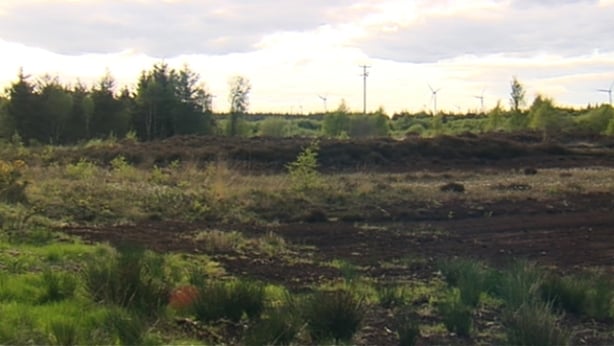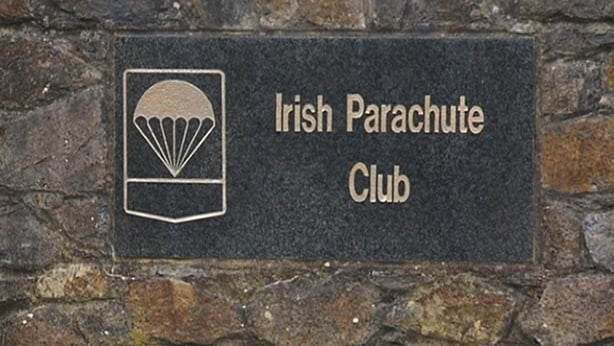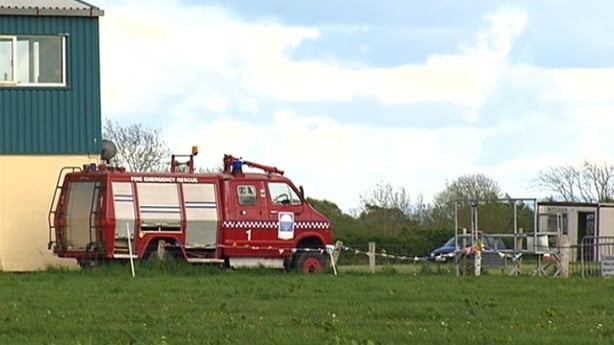A verdict of accidental death due to massive trauma as the result of an air accident was the decision of the jury at an inquest in Tullamore today into the deaths of pilot Niall Bowditch and seven-year-old passenger Kacper Kacprzak at Clonbullogue, Co Offaly on 13 May 2018.
The inquest heard that both victims suffered severe head trauma and multiple fractures to their upper and lower limbs.
The airplane was discovered embedded in a bog near Walsh Island in east Offaly after it crashed while returning from a parachute jump.
It had "virtually nose dived into the ground" and had been "flying vertically like a torpedo" according to one witness.
Coroner Raymond Mahon told the inquest that questions about responsibility for operating the flight and the legality of carrying a passenger were "another matter entirely" and the inquest was not the appropriate forum for such a discussion.
Witness Jimmy Slattery told the inquest of how he was out walking his dog when he saw the plane take off, later he saw the plane again when he heard the "roar" of its engine and he knew it was in the wrong place as he regularly saw planes take off and land at the parachute club.
The plane "virtually nosedived into the ground", he said. It had been "flying vertically like a torpedo into the ground".
Mr Slattery saw the plane "fly straight into the trees" and then he heard "a hollow thump". He ran to the road where he met cyclist Ger O'Rourke and his wife who called 999, as he was "all thumbs".
"There was no smoke, no fire, no explosion, just silence."

Mr O'Rourke said he and his wife Elizabeth Crowley had been out cycling and noticed a plane flying low "on its side".
A car went by so he looked away and when he looked back the plane was gone. After his wife called the emergency services they waited 15 minutes until the fire brigade arrived and then they went home.
Irish Parachute Club instructor Caroline Cassidy told the inquest that she had not known that Kacper was on the flight. Her own daughter had gone up in the plane with the pilot the previous week.
She had noticed the plane in a nosedive but that was not unusual when descending, "sometimes they come down just a little bit faster". Her role was to ensure the jumpers landed safely and after she had done that, she got the call that the plane was missing.
The pilot, who was nicknamed Billy, had been in "great spirits" when she spoke to him prior to the flight. When asked by David Richardson BL (who was Kacper's family at the inquest) if it was her role to see who got onto the plane, she said the pilot was in command and made that decision.
Ms Cassidy said she did not know how Kacper got on board - "that’s down to the pilot" - but she did say that the boy should not have been in that area.
She had witnessed many children on flights that land at the parachute club’s airstrip, she said.
When her 17-year-old daughter had gone on the flight the previous week, Ms Cassidy had notified the manifest, but said that she did not control it. "It was Billy who asked her if she wanted to go."
Victor Clarke, legal representative for the Irish Parachute Club, asked her to clarify that it was down to the pilot who was allowed on the aircraft. Ms Cassidy said her responsibility was the movement of the jumpers.
Kevin Brerton, a senior pilot with the Irish Parachute Club, told the inquest that on the day of the accident he was on duty for air traffic control.

The pilot had been cleared to land in their last communication, when there was subsequently no response from the pilot he became concerned and went up in another plane to carry out a search.
In the meantime he contacted the national Air Traffic Control to inform them that there was a plane missing.
On spotting the wreckage "deep in the forest" he called for a lower flying helicopter to hover over the position so emergency services could find their way to the site.
Mr Brerton said he had not been aware that there was a child on board. As a pilot, he had on a number of occasions taken passengers on flights with him but they were usually "would-be pilots" or a parachute instructor. He had on one occasion brought his own son with him, but "never a small child."
Parachutist Padraig Duffy told the inquest that the first he became aware of Kacper’s presence on the flight was two minutes before jumping when he looked into the cockpit and saw the boy sitting in the co-pilot’s seat.
He had been sitting directly behind the boy and was the last person to jump. When he jumped and looked back up at the bottom of the plane, he said he could not see anything wrong with the aircraft.
When he got back to the parachute club after the jump he noticed that the plane had not returned and was missing.
Fire officer Gabriel Conlon described how a passer-by directed the emergency services to the scene where they met with members of the Irish Parachute Club who offered to assist with the search.

He gave them a fire service radio and contacted the Coast Guard to seek assistance from the air in the search.
A Heli-med helicopter relayed the location of the wreckage and the Coast Guard helicopter hovered over the site to guide them to it.
The plane was embedded in the bog so trees had to be cut back to allow a digger on site to dig around the plane.
The tail section was freed first, then the middle section, then a propeller and the engine compartment.
Eventually the cockpit was found at a depth of around 3m (10ft), he said.
The bodies of the pilot and the young boy were found in their seats.
The cockpit was lifted out and both bodies were removed to the Midlands Regional Hospital, Tullamore.
The jury returned with a verdict of accidental death due to massive generalised trauma for both Mr Bowditch and Kacper.
The chairperson extended thanks to all the emergency services and offered sincere condolence to both families.
The coroner also offered his deepest sympathy and addressed the parents of Kacper, saying that to lose a child at seven years of age must be a dreadful experience.

